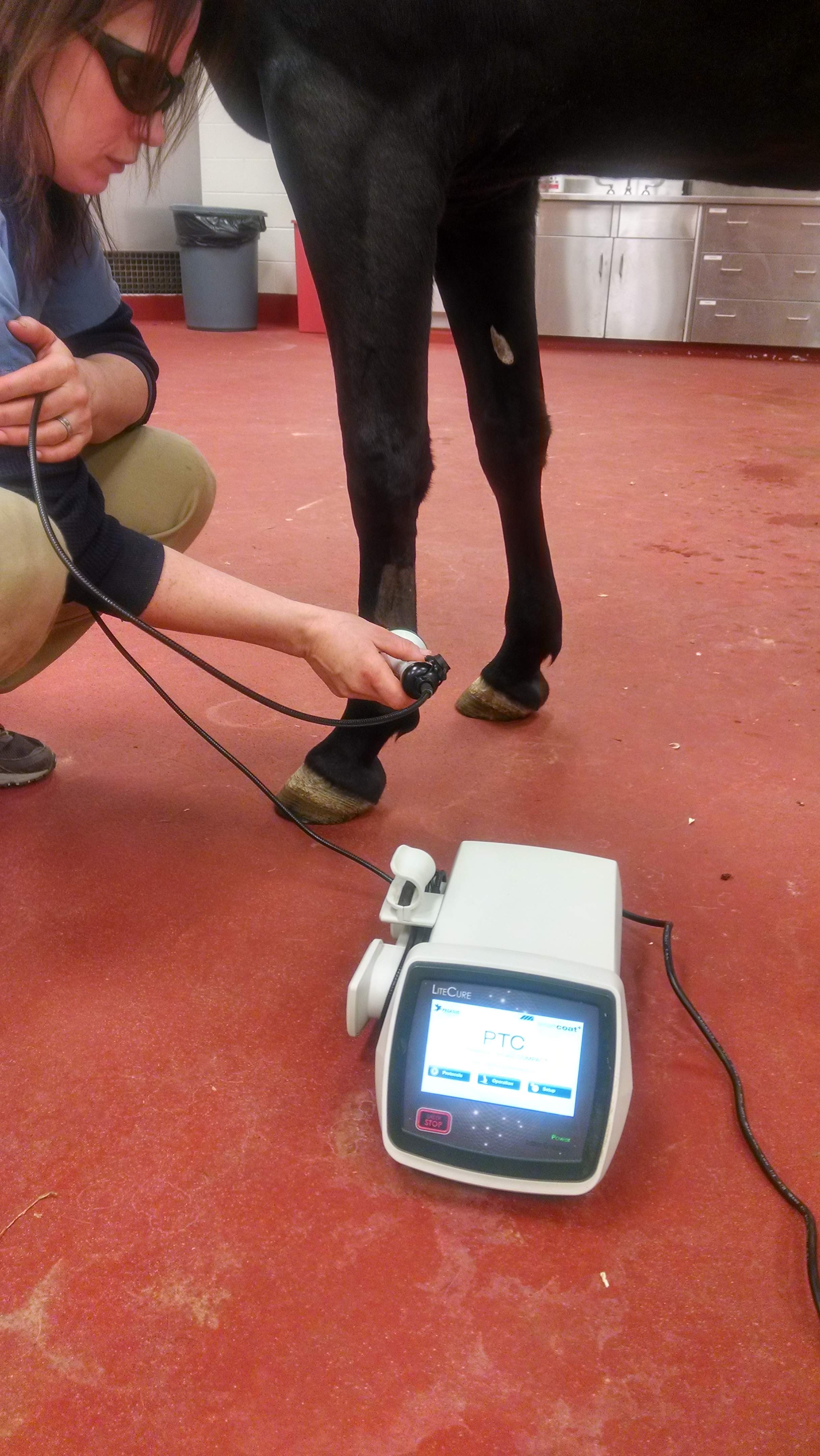Discovering the Holistic Strategy of Equine Therapy for Individual Development
Discovering the Holistic Strategy of Equine Therapy for Individual Development
Blog Article
Assessing the Efficiency of Laser Treatment in Horse Therapy for Injury Rehabilitation
The evaluation of laser therapy's efficiency in equine injury recovery hinges on numerous factors, including recovery time, discomfort mitigation, and tissue regrowth. Vets often observe remarkable end results with laser therapy contrasted to conventional approaches, positioning it as a vital element in equine treatment.
Understanding Laser Therapy
Laser therapy has actually ended up being a crucial device in veterinary medicine, specifically in the therapy of equine conditions. Known for its non-invasive nature and efficiency, laser therapy includes the application of certain wavelengths of light to stimulate tissue repair service and reduce inflammation. This restorative modality is significantly favored for its capacity to speed up the healing process in horses struggling with a range of musculoskeletal injuries and chronic problems.
The main mechanism behind laser therapy is its ability to boost mobile features. When laser light permeates the skin, it is soaked up by mitochondria, the powerhouse of cells, which causes enhanced manufacturing of adenosine triphosphate (ATP) This biochemical power increase promotes cellular repair work and regrowth. Furthermore, laser therapy promotes vasodilation, enhancing blood circulation and oxygen distribution to broken tissues, therefore speeding up recuperation.
In equine medicine, laser treatment is specifically advantageous for problems such as tendonitis, osteoarthritis, and wound healing. The strategy is lauded for its pain-relieving buildings, enabling equines to restore wheelchair and function extra swiftly. Veterinarians additionally appreciate its minimal side impacts compared to other treatment methods, making it a reputable and risk-free option for equine treatment.

How Laser Treatment Functions

Upon absorption, these photons activate a series of biochemical adjustments, improving mitochondrial function and leading to enhanced adenosine triphosphate (ATP) production. This rise in ATP accelerates cellular metabolic process, promoting cells repair work and regeneration. Furthermore, laser treatment modulates inflammatory reactions by influencing cytokine levels and lowering oxidative stress and anxiety, consequently relieving discomfort and swelling.
An additional significant facet of laser treatment is its duty in improving microcirculation. The treatment promotes vasodilation, enhancing blood circulation and oxygen delivery to broken cells (Equine Therapy). This helps with the elimination of mobile particles and supports the expansion of fibroblasts and collagen synthesis, crucial for wound healing
Professional Evidence
The efficacy of laser therapy in equine therapy has actually been confirmed via various professional researches, showcasing its therapeutic prospective across a range of conditions. A study conducted by Turner et al. (2012) showed that steeds treated with low-level laser treatment (LLLT) for tendon injuries showed sped up recovery compared to those receiving conventional treatments.
In a similar way, research study by Johnson and coworkers (2015) focused on equine muscle injuries, exposing that laser therapy dramatically accelerated muscle fiber regrowth and decreased muscle tightness. Clinical assessments have actually shown that laser treatment can relieve persistent conditions such as osteoarthritis.
Vet Insights

Vets likewise value the adaptability of laser therapy. It imp source can be employed for a wide variety of problems, from surface injuries to deeper musculoskeletal injuries. Dr. Emily Brown highlights its energy in treating problems like tendonitis and osteoarthritis, where conventional treatments often fall brief. She mentions that laser therapy can be customized to the certain requirements of each equine, guaranteeing optimum end results.
Moreover, vets value the capacity to incorporate laser treatment with various other therapy modalities. This multimodal technique can improve general therapy effectiveness, offering a comprehensive remedy for equine rehab. Such endorsements from experienced specialists emphasize the growing acceptance and application of laser treatment in equine medication.
Practical Considerations
An essential aspect of applying laser therapy in equine therapy entails comprehending the sensible factors to consider that ensure its effectiveness and weblink safety. Primarily, it is critical to choose the appropriate laser gadget, as various types vary in wavelength, power, and penetration deepness. Equine Therapy. Vets have to be skilled in these specifications to tailor therapy methods properly per injury kind
Furthermore, the frequency and period of laser treatment sessions require cautious planning to optimize restorative advantages while decreasing any kind of potential damaging impacts. Consistent monitoring of the steed's response to therapy can direct essential modifications in the treatment regimen. Establishing a risk-free and regulated environment during therapies is likewise vital to prevent unexpected exposure to laser discharges, which might hurt both the steed and the trainer.
Training and accreditation of personnel providing laser therapy are critical to ensure appropriate technique and to maintain safety requirements. Furthermore, preserving precise records of each session, including laser settings and observed results, is important for reviewing the total performance of the treatment check these guys out and for making data-driven decisions.
Conclusion
Laser treatment has actually become a reliable technique in equine injury rehab, using substantial advantages in recuperation time, pain alleviation, and cells recovery. Medical studies highlight significant improvements in conditions such as tendonitis and osteoarthritis, attributed to boosted mobile function and boosted ATP production. Veterinarian monitorings corroborate these searchings for, highlighting exceptional results compared to conventional treatments. For ideal outcomes, continuous tracking and individualized therapy methods stay crucial in leveraging the complete possibility of laser therapy in equine treatment.
Report this page